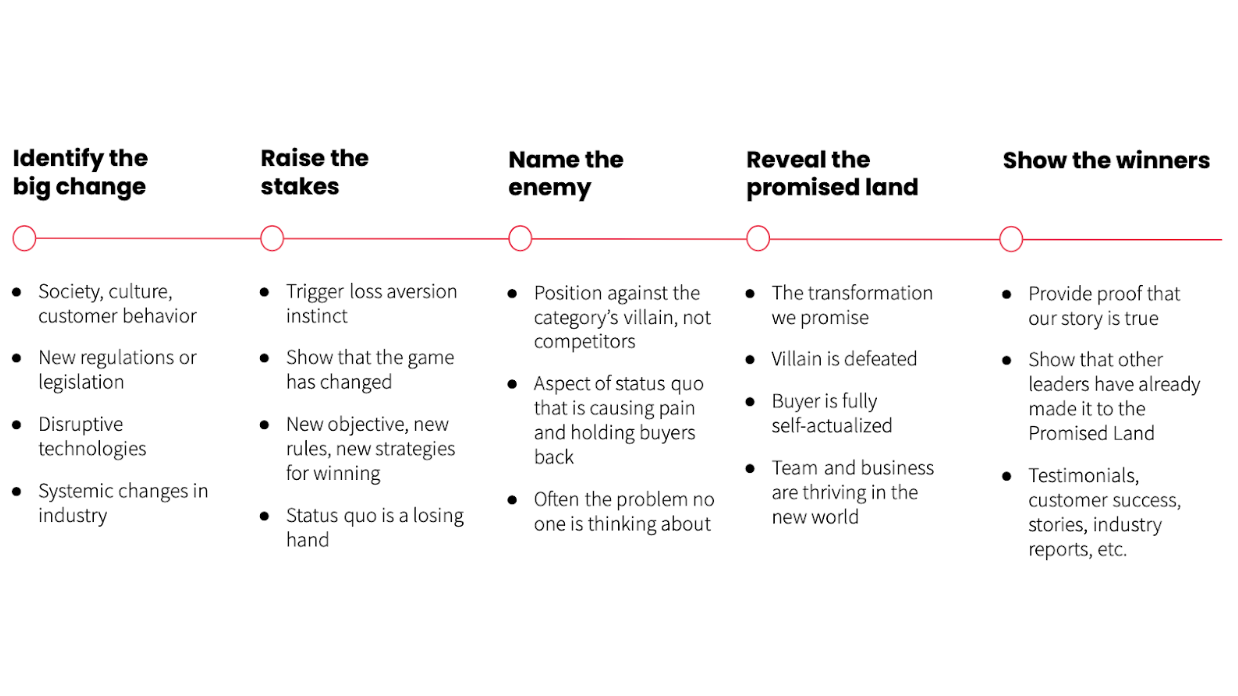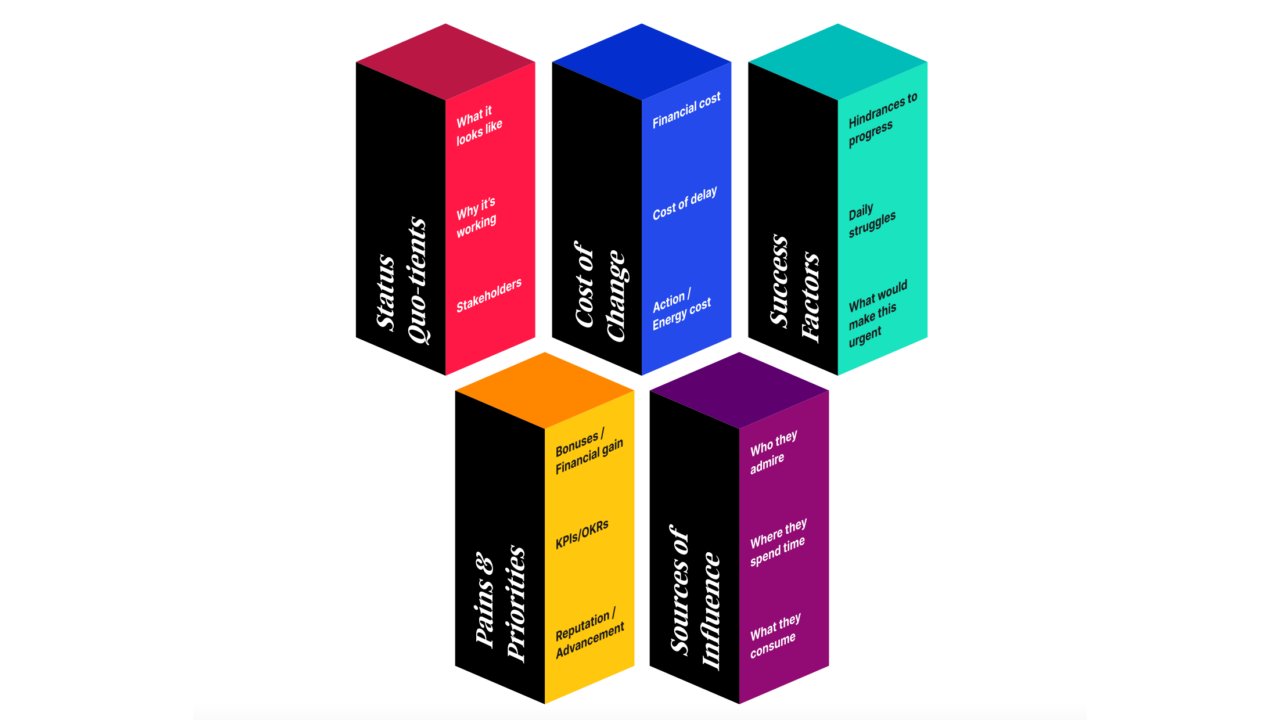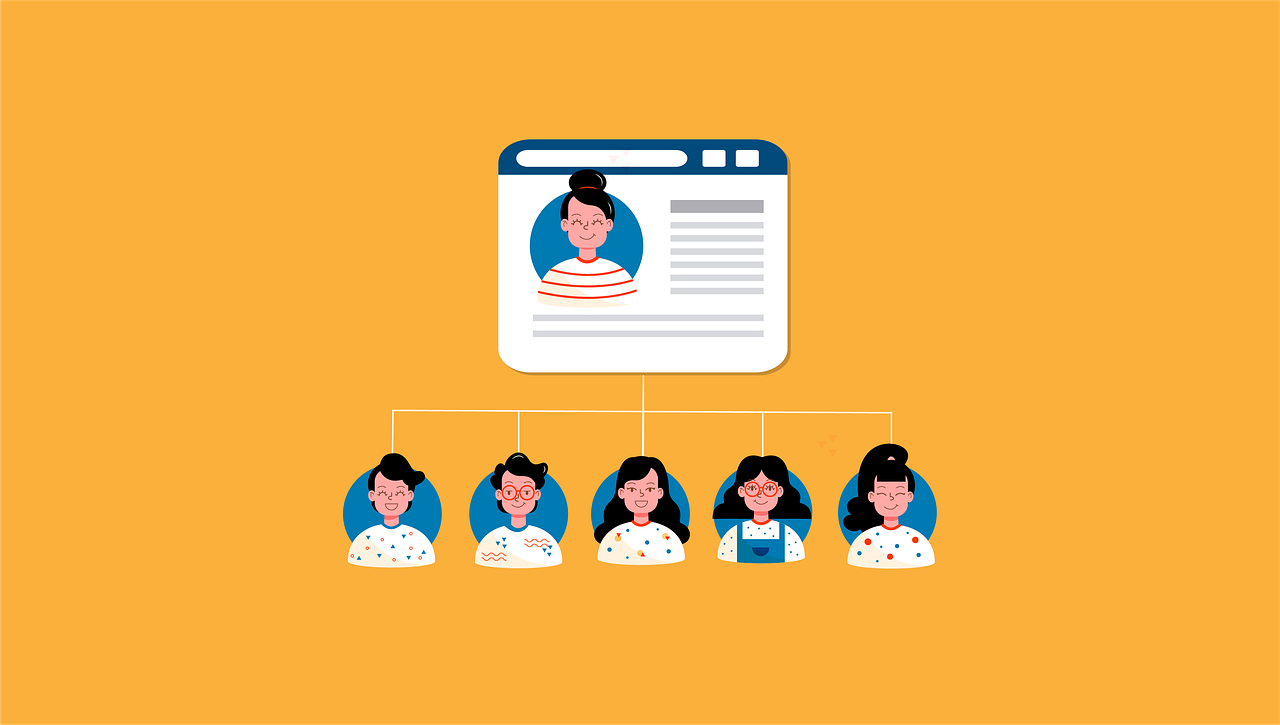Do you struggle to create demand among new audiences? Creating demand among those who aren’t yet in the market is key to growth, and if you understand that, you’re already ahead of most of your competitors. But what do these out-of-market audiences look like?
Your target audience is not simply everyone who is unaware of your solution. The out-of-market buyers you’re targeting are those who have a problem that your business can solve and the means to purchase the solution. To find out who they are and what motivates them, you’ll need Buystander personas. Download our free resource kit for a step-by-step guide to creating your own Buystander personas.
Once your personas are complete, it’s time to put them to practical use in your demand creation campaigns. Here’s how to craft your insights into a compelling narrative, develop it into content that resonates, make a case to your team, and get it out to your audience.
Build a Compelling Narrative
Your Buystanders aren’t ready to be sold something; they don’t even realize they have a problem yet. But a story that speaks to their most pressing needs and goals can capture their attention and get them thinking in the right direction. The Buystander Personas book introduces the Why Change Now story, a narrative that demonstrates the importance of taking action to move out of the status quo.

This is a brief overview of how to create your narrative, but you’ll need your Buystander personas to inform it. For example, look at the Pains and Priorities section of your personas to determine what frustrates your buyers most about the status quo and what their fears are.

Identify Content Types and Topics that Support Your Narrative
Understanding your buyer personas will help you speak directly to your audience. Look to their Sources of Influence for insights on the types of content that they’re likely to read. Do they prefer data-driven reports or step-by-step how-to pieces? Are they podcast listeners? Do they have very limited time and prefer quick videos to long-form content? Are they members of online communities?
Choose topics grounded in real issues
Your Buystander personas help you identify which issues really matter to your audience. Look at the Pains and Priorities again along with the Success Factors. This tells you what the most pressing problems are and what a successful solution would look like.
In an interview for our marketing leaders report, Ken Chow, CRO of Qrvey, gave the insightful example he calls “the 8 a.m. inbox problem:” “They come in Monday, at 8 a.m., the first thing they do is check their inbox and their email. What is the thing that they’d just go, ‘Oh, I’ve got to deal with this again this week.’”
When you know what this is, you have a topic Buystanders will instantly relate to. People often accept daily issues as an unavoidable annoyance and don’t even think to look for a solution. But once you have their attention, they may be willing to consider the possibilities.
Amplify the pain associated with the status quo
This is your opportunity to make audiences realize that the daily frustration they live with is an urgent threat. Show them that the status quo is the enemy of success.
Ask yourself these questions:
- What do people hate about the status quo?
- What are the risks of living with the problem? What do they stand to lose?
- Why does the problem need to be solved urgently?
- How is the status quo harming businesses?
- What does success look like?
Get Buy-in from Your Team and Other Departments
Demand creation campaigns can be tough to get buy-in for because it takes time to show results. Many companies are reluctant to invest in demand creation and stick to demand capture despite the ever-shrinking pool of in-market buyers. Buystander personas strengthen your case for demand creation.
They narrow down your audience to those who have the potential to become buyers. They empower you to tap into the large pool of people who aren’t in the market for a solution but are a clear fit for what you’re offering.
With this direction and a solid narrative, you can build support for a campaign to start reaching your untapped market.
Get Your Narrative Out
Once you’ve crafted a compelling narrative and gotten buy-in, you’re ready to get your message out. As demand creation is more about building awareness and genuine demand, rather than generating leads, we recommend ungating your content for the widest reach. Here are a few ways to increase your narrative’s reach.
Ad campaigns
If you have the budget, ad campaigns are the best way to get your message across to a wide audience quickly. Don’t be afraid to be creative and shock your audience into the urgency of their problem. Studies from the Ehrenberg-Bass Institute show that creativity has a large impact on B2B brand success, and it isn’t used often enough.
Organic marketing
A topic that resonates has the potential to gain traffic organically. Traditional SEO content for highly-searched keywords is one way to do this. Another is through social media; a creative post around a popular topic can generate shares and discussions.
Rethink your channel strategy
Many buyers are influenced by sources that aren’t clearly attributable, for example, via word of mouth, forums, or other online communities. They’re bombarded by emails and ads, and if they’re not looking for a solution, it’s not guaranteed they’ll find you through a search even if your topic is broad. Look at your Sources of Influence to see where they spend their time, and focus on getting your message there, for example, by reaching out to influencers, becoming a podcast guest, or participating in communities.
Kickstart Your Demand Creation Campaigns with Buystander Personas
As you can see, Buystander personas are crucial to developing relevant demand creation campaigns. By understanding your Buystanders’ status quo and how that’s causing frustration or holding them back from success, you have what you need to make the case for change.
Personas serve as a guide through every step of your strategic process, from building the narrative and identifying what topics and content appeal to getting buy-in for a campaign and executing it through the right channels.
Finding Buystanders and developing personas requires an investment of time and resources, but it pays off in effectively creating new demand. If you need assistance in creating your Buystander personas, contact us for a free consultation.



